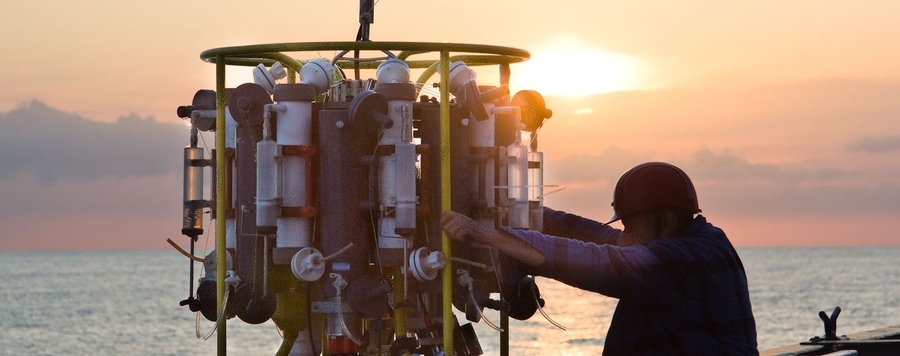
Environmental monitoring of the Baltic Sea
ACHTUNG!!! Der Vortrag wird in englischer Sprache gehalten!!!
The Baltic Sea is a landlocked, brackish, enclosed-shelf sea system, covering an area of 415 266 km2 (including the Kattegat). As a drainage area for approximately 90 million people in 14 different countries, the Baltic Sea has been studied extensively. The saline inflows through the North Sea produce a lateral surface salinity gradient throughout the whole Baltic Sea from high salinities (>25) in the transition zone of the Kattegat to low salinities (<3) in the Gulf of Bothnia. The inflow of seawater from the North Sea in combination with a fresh water excess from the large drainage area also results in pronounced vertical salinity gradients. At the central Baltic Sea a resulting stable halocline below 60 to 70 m usually separates the water column into an upper oxygenated layer and an underlying oxygen deficient and anoxic/sulfidic layer. The estimated average residence time of the Baltic water is approximately 5 years but even up to 20 years for deeper waters. Moreover, the area of the brackish water zone, covering 62 % of the surface water, is extraordinarily large.
The Leibniz Institute for Baltic Sea Research Warnemünde (IOW) has been involved in various monitoring activities of the Baltic Sea for decades. Specifically, the biological monitoring at the IOW includes the assessment of the qualitative and quantitative composition of the phytoplankton, mesozooplankton and macrobenthos, the determination of the chlorophyll-a content of water samples and the evaluation of sediment traps. However, the current biological monitoring of the Baltic Sea, which is reduced to morphologically safely-identifiable organisms, does have fundamental gaps in terms of the organismic and functional biodiversity. To meaningfully fill the gaps of biological monitoring, a significant expansion of the currently practiced biological monitoring would be necessary, which is proposed, e.g., within the Concept for the National Roadmap for Research Infrastructures (German Center for Biodiversity Monitoring, BioM-D).
This presentation will introduce into the characteristics of the Baltic Sea, the current monitoring of the Baltic Sea, the IOW-concept within the BioM-D and, last but not least, some highlights regarding newly detected organisms adapted to the brackish ecosystem.






